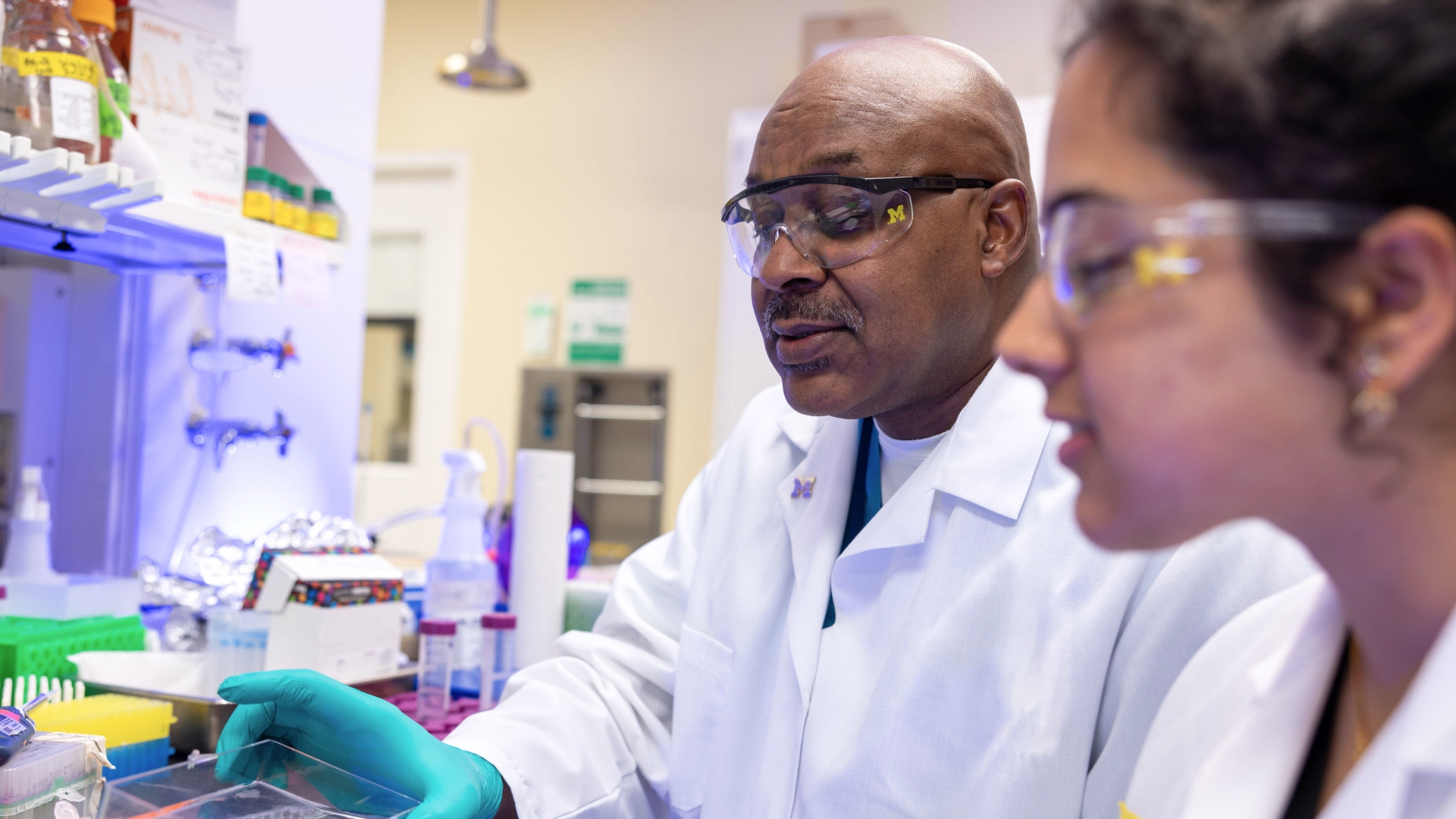The Myers Lab, led by Daniel D. Myers, DVM, MPH, DACLAM, is developing new approaches to treating, and preventing, venous thrombosis within the Conrad Jobst Vascular Research Laboratories.

The Myers Lab, led by Daniel D. Myers, DVM, MPH, DACLAM, is developing new approaches to understanding and treating venous thrombosis. The formation of blood clots within a vessel can have deadly consequences, and the Myers Laboratory is investigating the processes involved in clot formation and new therapeutic interventions to inhibit them with fewer side effects. Our work is highly translational, with a goal to improve treatment — and prevention — for patients.
Our research mission is to improve the human condition by discovery through research on means to prevent, cure, and lessen the burden of vascular disease, and provide an arena to train DVM’s, M.D.’s, Ph.D.’s, medical and post-doctoral research fellows, clinicians, graduate students, and undergraduates alike. We are internationally recognized for our expertise in translational animal model development, and our research in this area is helping define the mechanisms underlying vascular disease and to evaluate new therapeutics. Through an NIH T32 training grant, the Jobst Pre-clinical group, as well as collaborations with the U-M Unit for Laboratory Animal Medicine, we also train future basic and surgical scientists through several novel programs for trainees at all levels.
Each year in the United States alone, some 900,000 individuals develop life-threatening blood clots known as venous thrombosis (VT). These can travel to the lungs and lead to pulmonary embolism. Approximately 300,000 deaths occur annually. Among those who survive VT, about half go on to develop post-thrombotic syndrome (PTS), a form of scarring of the vessel wall that leads to a host of dangerous consequences. Current treatments include anticoagulants and removal of obstructions, but anticoagulants carry a risk of bleeding, particularly as patients age. And invasive procedures to remove blockages have not been as effective as we would like them to be.
There is a great need to understand more precisely how and why clots form and why some patients develop PTS. We also need to identify strategies to interrupt those processes. Our laboratory works to address these gaps and to evaluate novel therapeutic compounds in pre-clinical models so that we can move promising therapies into clinical trials. Our ultimate aim is new, more effective and individualized treatments.
We look at several pathways involved in vascular disease and the development of venous thrombosis, including the role of inflammation. We investigate the metabolic mechanisms underlying the formation of blood clots as well as the development of post-thrombotic syndrome (PTS). More specifically, we are exploring the biology of selectins, a family of cell adhesion molecules whose involvement in the formation of thrombi our laboratory has characterized in animal models. That work is leading us to look at novel selectin inhibitors to resolve and prevent thrombus formation.
In addition to clarifying the fundamental science involved in clot formation and development of PTS, we also are investigating sex differences in VT and the role of aging. Using the translational animal models of vascular disease we developed, we are investigating a sustained-release pain medication for use in preclinical studies. Pain control is critical to our work in animal models, and results to date are promising.
Over the past 20 years, our work has advanced the understanding of vascular wall biology, vascular disease and inflammation, and venous thrombosis. Our research has validated the translational use of nonhuman primate models of thrombosis, while earlier preclinical models developed in our laboratory have provided new insights into selectin biology and venous thrombosis, post-thrombotic scarring as well as selectin inhibition and aging. The translational models of VT in pigs and non-human primates are utilized to discover better therapies for clinicians as well as for testing medical devices and therapeutic compounds to control and prevent VT and PTS.
Our work in murine models was the first to show that inhibiting E-selection could significantly reduce the formation of VT. These findings led to further research by our laboratory, and others, on selectin inhibition and the effects on VT and fibrosis in our models. Our work on selectin inhibition now is providing new therapeutic targets, not only for treatment but also prevention of thrombus formation. Currently we are conducting in vivo studies of selectin inhibitors alone and in combination with anticoagulants, with findings leading to clinical trials for these compounds in the treatment of VT and pulmonary embolism. Finally, the training of students at all levels receive in our laboratory helps ensure continued cutting-edge research by basic scientists, veterinarians and surgical scientists.